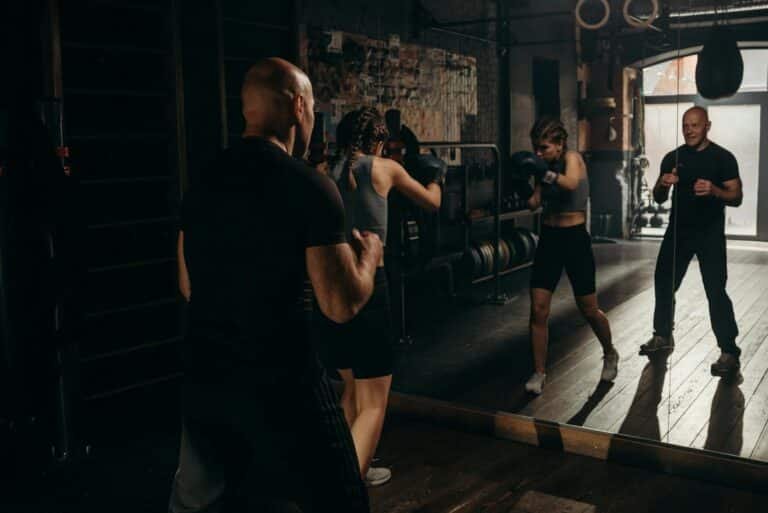Smart defence starts with the head. This guide shows how to add head movement in boxing so you slip, roll, and pull back with balance and intent.
Use the drills, fixes, and a simple four-week plan to make your defence automatic, set up clean counters, and avoid looking like this guy.
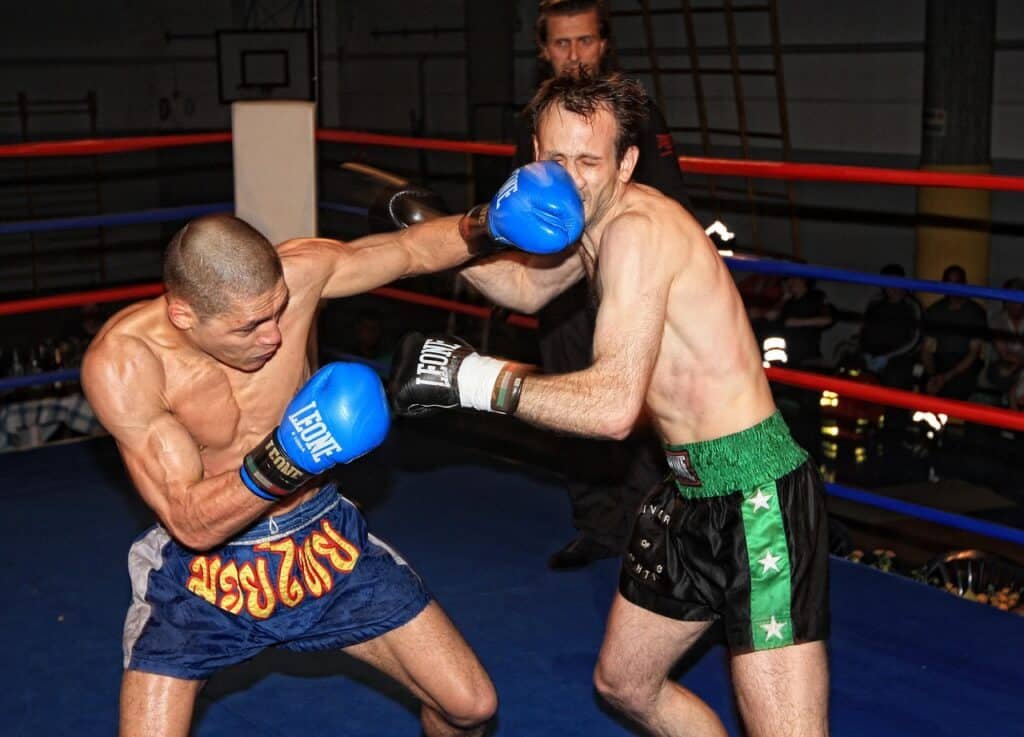
Why Head Movement Matters In Boxing
Mastering head movement in boxing improves defence and makes your counters unpredictable. Without it, opponents will always know where your head is and could land shots perfectly every time.
Head movements help to:
- Avoid clean shots without burning energy.
- Create angles for sharp counters.
- Stay relaxed under pressure and see more.
- More variety in defence.
A high guard works in corners or tight spots, but if you can only block shots, then you will pose no real threat to your opponent. Slips and counters add variety, keeping your opponent guessing!
Fundamentals of Head Movement in Boxing
Let’s look at the fundamentals of head movement in boxing. Remember that most moves in boxing start at the ground and work their way up, do not just move your spine, your legs should be the main force in action.
Neutral Stance and Guard
A solid stance is the base for effective head movement in boxing, keeping you safe while staying ready to punch. Set your feet shoulder-width apart, knees soft, chin tucked, eyes level.
Keep your lead hand active and your rear hand close to the cheek. Maintain a steady breathing rhythm and exhale with every punch to keep your movements smooth.
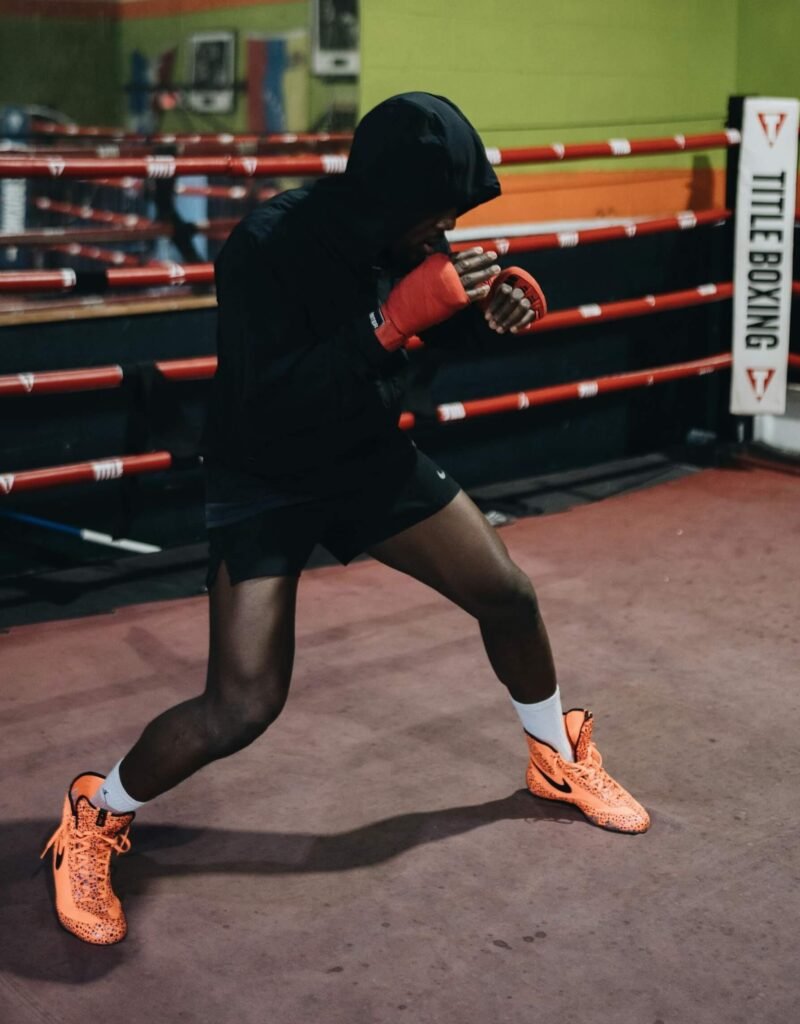
Slips Left and Right
Slips are one of the simplest boxing head movement drills and should be practised daily. From guard, move your head a few centimetres off centre by bending at the knees and waist, not the spine. Rotate the shoulders slightly and keep your eyes on the target.
Rolls Under Hooks
Rolling under hooks is a classic form of defensive head movement in boxing that sets up body counters. Drop your level and draw a shallow “U” with your head. Knees and hips drive the move while the back stays tall. Finish in stance, ready to punch.
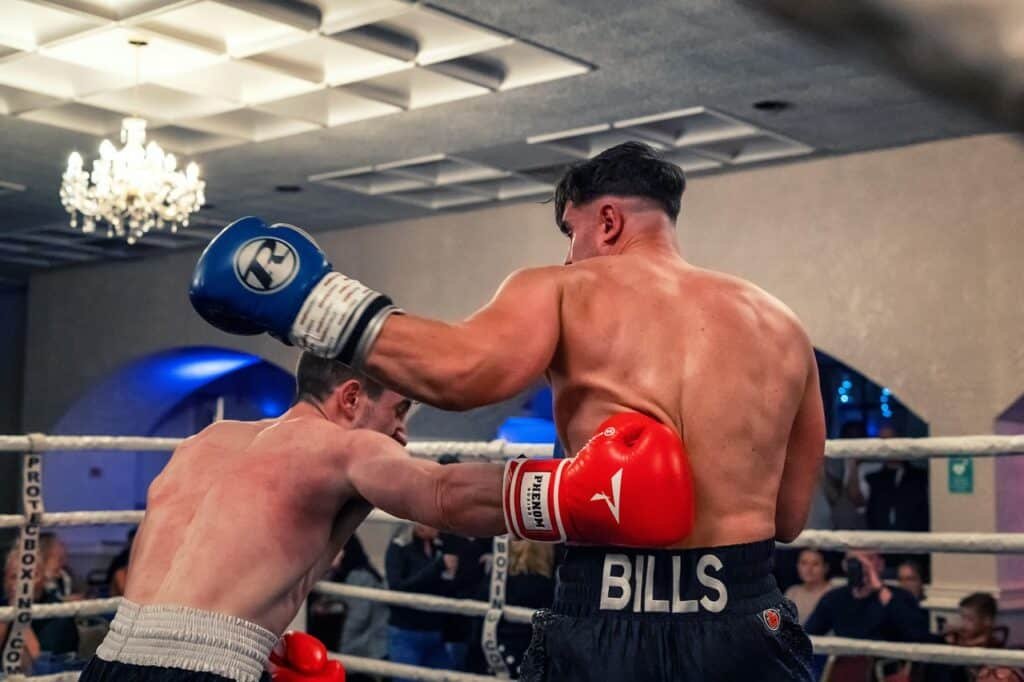
Above is the perfect example of a roll, even using an integrated body shot to counter.
Pull Back and Reset
The pull-back is another head movement in boxing that creates space without losing balance. Push from the ball of the rear foot and let the head travel just outside the strike zone while your weight stays inside your base. Return to the range ready to counter with a straight or a check hook.

Drills That Build Automatic Head Movement While Boxing
Learning these moves is easy but trusting them in sparring or a competition is a different situation entirely. Drilling these moves will make them faster and more refined, ensuring the best counter shot can follow an evasive action by reflex.
Slip Rope Drill
This is one of the most effective drills for learning consistent head movement in boxing. Run a cord at nose height. Shadowbox along the line, slipping to each side, then rolling under. Add a good jab as you step and a fast cross as you return to the centre.
Shadowbox With Cues
Shadowboxing with head movement drills trains your reflexes without risk. Move around the ring and call your own cues. Say jab or hook and slip or roll in response, then fire a fast counter. This keeps your eyes forward and your reactions sharp.
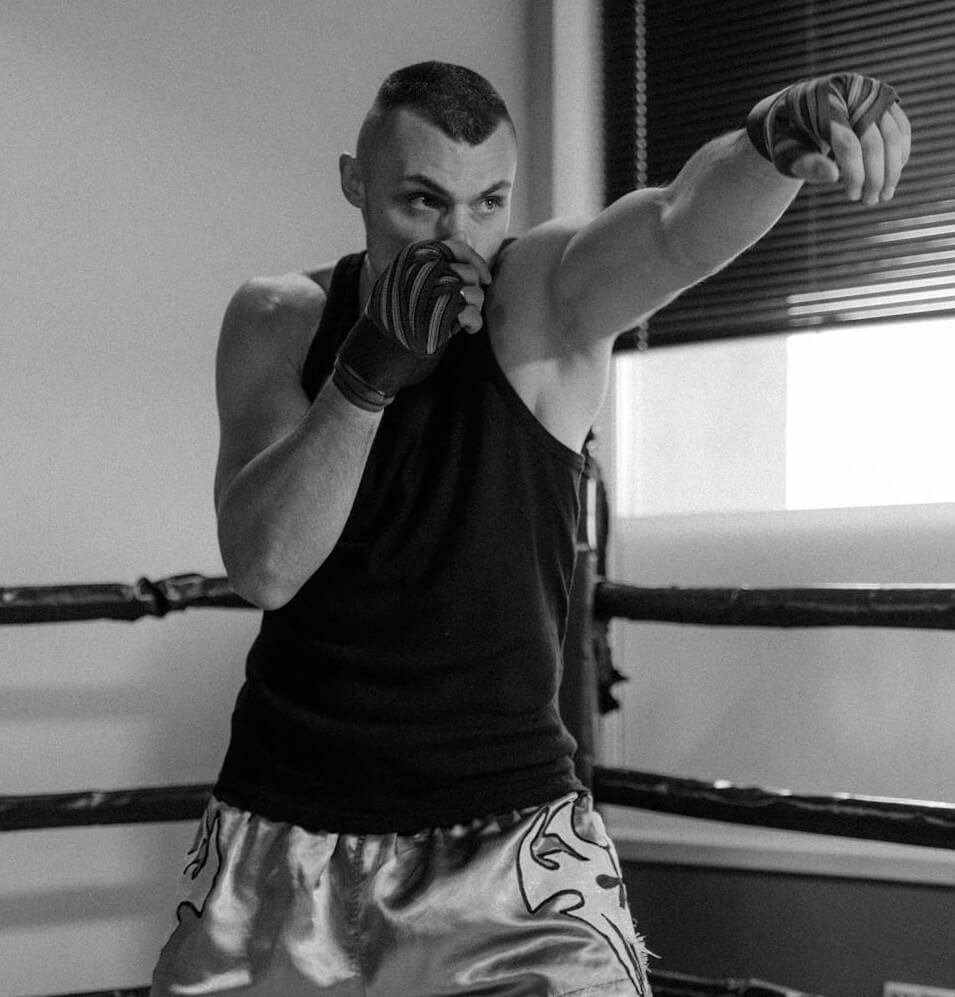
Just because there isn’t an opponent doesn’t mean you can get sloppy. Stay quick, and if you have any questions, check out our shadowboxing for beginners guide.
Double End Bag
The double-end bag is perfect for practising boxing head movement techniques with rhythm. Work simple patterns. Jab, slip inside, jab cross. Jab, pull, cross. Stay relaxed and let the bag teach timing.
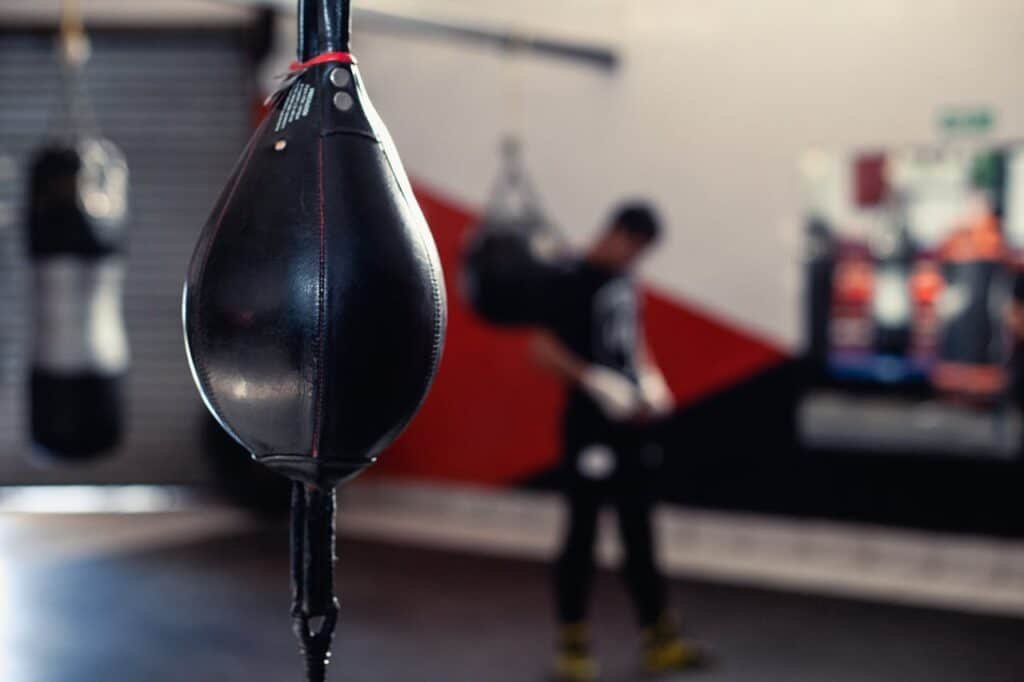
Mirror Drill
Face a partner. One partner gives light feints and slow shots. The other reads, slips, and rolls with small precise moves, then swaps roles.
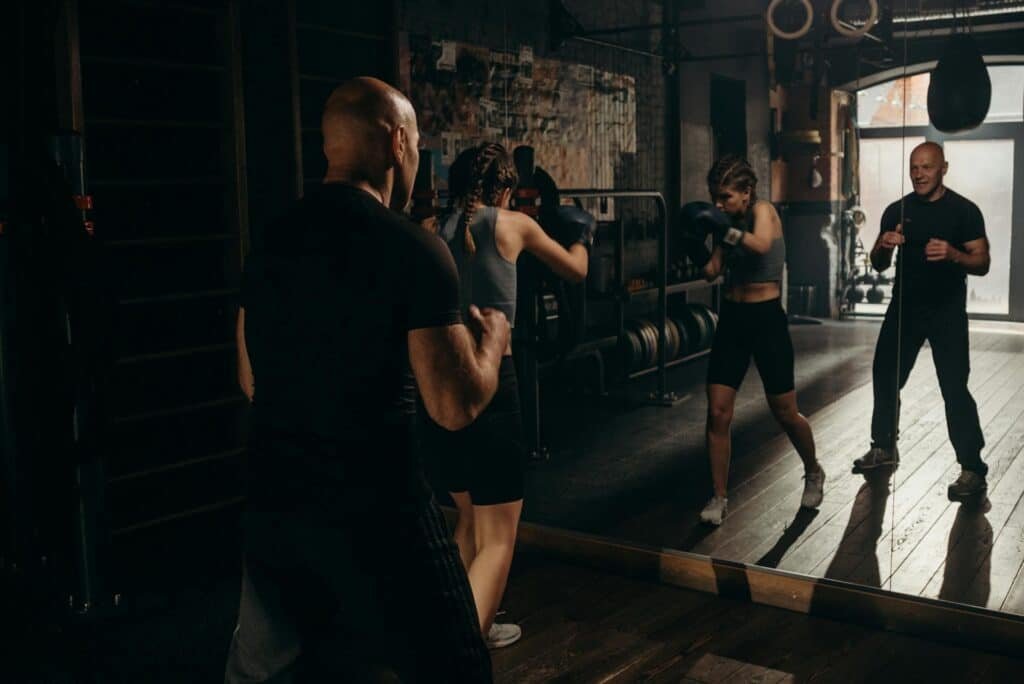
Four Week Plan To Add Head Movement While Boxing
| Week | Focus | Goal |
|---|---|---|
| One | Form on slips and rolls | Ten crisp reps each side with balance after every move |
| Two | Drills with strikes | Link slips to punches to make head movement in boxing part of your natural combinations |
| Three | Double end bag timing | Land a clean counter after each defensive move for two minute rounds |
| Four | Light spar integration | Use one defensive theme per round such as slip inside then counter |
Common Mistakes And Fast Fixes For Head Movement In Boxing
- Over slipping: Keep the head just off line so counters stay in range.
- Dropping the eyes: Keep vision forward and chin down so you see the next shot.
- Leaning at the waist: Many beginners struggle with head movement in boxing because they lean too much at the waist. Bend the knees and load the hips so you can punch back.
- Frozen feet: Add a small step with your slip to create better angles.
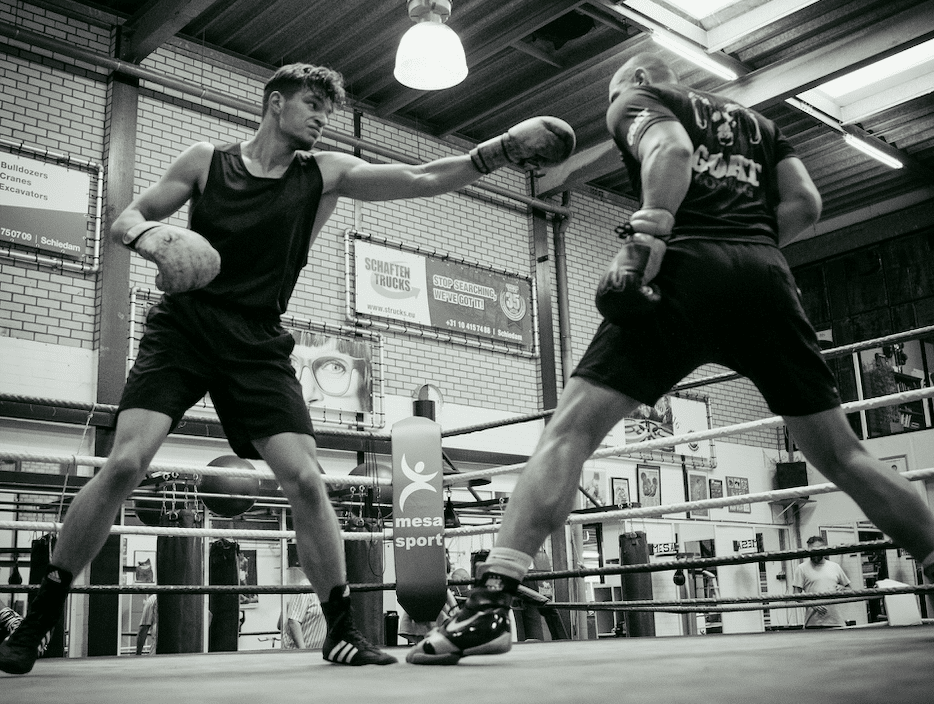
A great pull back with distance management. Perfect opportunity for a return hook.
Blend Head Movement With Footwork And Counters
Blending footwork and head movement in boxing creates the angles for powerful counters. Here are some great suggestions:
- Slip inside, then right to the body, then a solid left hook to the head.
- Pull back then step in with a fast cross.
- Roll under a hook, then come up with a tight uppercut.
Adding Head Movement in Boxing Sparring
Light sparring is the best place to test head movement in boxing in real time. try out these rounds below and see how your head movement while boxing improves:
- Start with light touch rounds and one theme, such as only counter after a slip.
- Raise pace slowly while keeping movements small and tidy.
- Review between rounds and pick one cue to improve in the next round.

It doesn’t need to be an expensive recording setup like above. A simple tripod with phone will make step 3 so much easier to analyse and improve from.
Gear Note
Comfortable gloves make practice smoother. For guidance, see our guides on padding types and boxing glove sizes.
Furthermore, UK Boxing provides extensive, high-detail information on boxing gear, rules, and regulations.
Quick Practice Template
- Three minutes slip rope then one minute rest.
- Three minutes shadowbox with cues then one minute rest.
- Three minutes double end bag focus on counter then one minute rest.
- Repeat two times for a solid skill session.

FAQ
How often should I train head movement?
Two to four short blocks per week works well. Keep sessions focused and finish feeling sharp, not tired.
Should I learn slips or rolls first?
Start with slips since they are small and quick. Add rolls once your stance and balance feel stable.
How do I know it is working?
Your partner misses clean while you are still in range to counter. Video a round to check that movements are small and you return to stance ready to punch.
Wrap Up
Add these drills and the four-week plan, keep movements small, and link every defence to a counter. With steady practice, your head will stay safe and your shots will land cleaner.
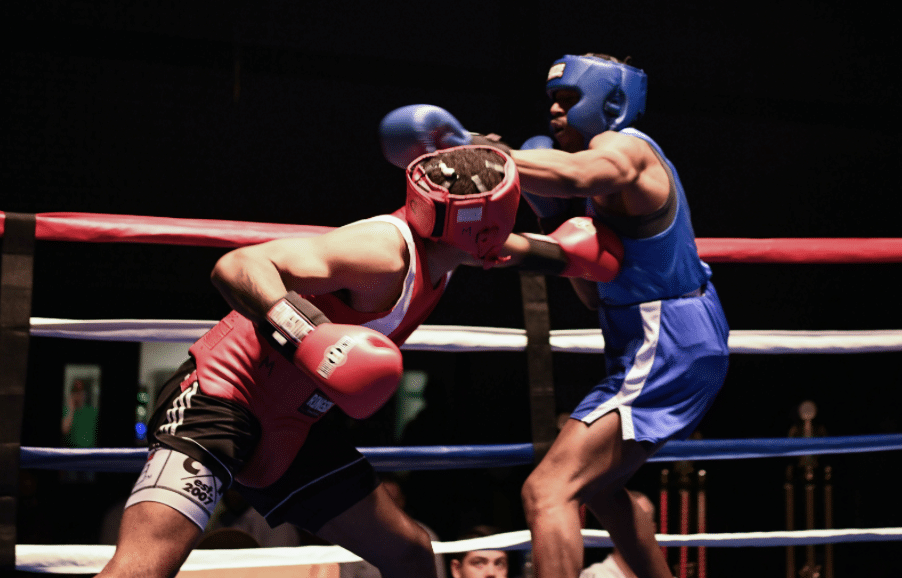
Further Reading for Beginners:

